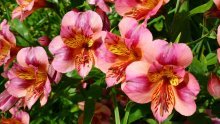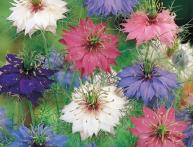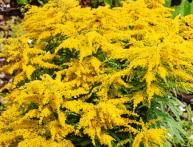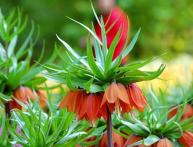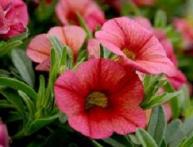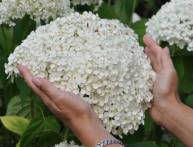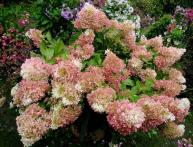Peruvian lily or alstroemeria: description, planting, care

The world of annual and perennial flowers is so large that the gardener faces a difficult task when he needs to choose “his” flower from all the variety. At the same time, it is desirable that it be beautiful, unpretentious, and not require huge physical and material costs when growing. Alstroemeria garden flowers fall under most wishes, care behind which, as well as planting it in the garden, does not require much trouble.
Content:
- Alstroemeria, history of discovery
- Alstroemeria flower, plant description
- Selecting a location and planting a Peruvian lily
- Alstroemeria care
Alstroemeria, history of discovery
Alstroemeria is a plant native to such South American countries as Chile and Peru. Currently, these flowers in their homeland grow along the roadsides, just like our dandelions. And during the ancient civilization of the legendary Incas Indians, this flower was revered as a gift from the supreme sun god Inti.
During the exploration of the American continent by the Spaniards, the plant came from the land of the Incas to Spain and grew there without attracting much attention to itself. This was the case until the Swedish scientist and entrepreneur Claes Alströmer set off on a voyage across Europe in 1760, during which he visited Spain. The interests of the young Swede included:
- chemistry
- botany
- zoology
The scientist spent a lot of time studying plants in private collections and greenhouses. Traveling around Europe, Klas did not stop observing the world around him. In Spain, he discovered a bright flower that was previously unknown to him. Since the Swede was a student and close friend of the taxonomist Carl Linnaeus, it is natural that he sent the discovered flower to him.
In 1762, K. Linnaeus described the sent samples and attributed them to a separate family, which he named Alstroemeria in honor of his student, and the species itself Alstroemeria; in total, the family includes about 50 species. Alstroemeria instantly won the love of Europeans and began to be grown, first in greenhouses, and then in the open air. Let's try to figure out why this plant is so popular.
Alstroemeria flower, plant description
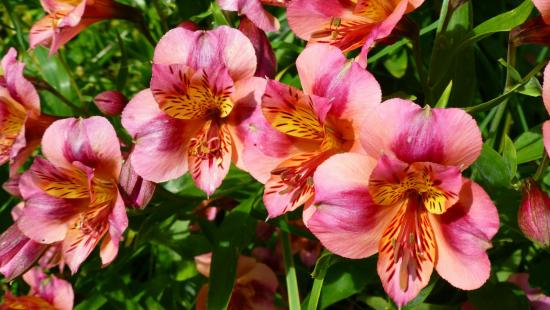
Before describing alstroemeria, it should be clarified that the name of the plant has another spelling variant - alstroemeria, as well as several popular names:
- Lily of the Incas
- parrot lily
- peruvian lily
All members of the family are perennial herbaceous plants. The roots have spindle-shaped thickenings - rhizomes. Stems are flexible and straight. Alstroemeria leaves deserve special attention. They have a property called resupination. The term means unfolding or turning around an axis.
Thus, the petioles of alstroemeria leaves are twisted so that the top of the leaf plate is at the bottom, and the bottom side is directed upward. Peruvian lily flowers have a shape between a lily and an orchid. This has given rise to incorrect information, which is disseminated by flower sellers when selling, that Peruvian lily is a hybrid of an orchid and a lily, which is fundamentally wrong. Like a lily, the flower is formed by six elongated and sometimes pointed petals.The coloring of modern varieties and varieties is very different.
Most often these are yellow, pink and red shades. On a plain background there is often a darker pattern of dashes and stripes. Flowering begins in late spring or early summer. Flowers are pollinated by insects or wind. In their homeland, the pollinators of some species are miniature birds - hummingbirds. The plants produce a fruit capsule with small round seeds. Interestingly, the fruit bursts and the seeds are scattered at a fairly large distance from the plant.
Under natural conditions, alstroemeria grows mainly in warm climates, although there are species that are common at a decent altitude above sea level. Over the years of cultivation in Europe, varieties have been developed that can be grown both in greenhouse conditions and in open ground.
Selecting a location and planting a Peruvian lily
The popularity of alstroemeria lies in the beauty of its flowers and tall stems, which allows it to be used for cutting into bouquets, although the flower petals tend to quickly shed. In addition, the rhizomes of some species are used in folk medicine to prepare starch, from which medicinal food is prepared. In the garden, the Inca lily is good as a tapeworm plant, in mono-groups and mixed plantings.
Despite the fact that the plant’s frost resistance is not very high, growing it in open ground It is possible if you provide winter shelter for the root system and choose the right location. When choosing a place for this plant, you need to choose an area with maximum sunlight. It is optimal to choose the south side.
Perhaps at the height of a summer day the flower will need light shade. Preferably moderately acidic, well-fertilized fertile soil.Drained loams are best suited.
It does not tolerate both drying out of the soil and stagnation of water in it. Although some species tolerate high humidity well. You can grow a Peruvian lily either by sowing seeds or by dividing the bush. Before sowing, alstroemeria seeds need to be stratified. To do this, they are placed at the end of January in peat mixed with garden soil and kept for about 50 days at a temperature of + 6.
After this, for several days I raise the temperature to + 20. The soil is sprayed with water, the pot is covered with glass and wait for the seedlings to appear. As the soil dries, moisten it and remove the glass for a while. Before planting in the ground, grown seedlings are hardened off at outdoor temperatures.
At the end of May, choosing cloudy weather, the seedlings are planted in a prepared bed. The holes are filled at intervals of 30 cm, a handful of rotted manure is added to the bottom, a flower is installed and the hole is covered with earth. Plantings are watered and the ground is mulched. Alstroemeria from seeds blooms only after a year. The rarest varieties and hybrids It is best to propagate by dividing the bush. You can divide a plant that you grow yourself or buy part of the rhizome at the store.

You can divide the bush in spring or autumn. Don’t get carried away and divide the bush into many small parts. It is optimal to get three divisions. As a rule, the Peruvian lily takes root well with proper care.
Alstroemeria care
The general rules of care are not fundamentally different from caring for other garden flowers; they are as follows:
- in weed removal
- in timely watering
- in fertilizing
- pest protection
- in disease prevention
It is much more important to preserve the plant in winter, especially for young seedlings in the first years after planting. Although it is traditionally believed that many varieties They can withstand frosts down to -20, but the plant still needs protection from low temperatures. During the autumn period, you need to do the following:
- shorten the ground parts to 5 - 7 cm
- add a layer of sawdust or leaves
- lay the spruce branches
- cover with a piece of roofing felt
You can do with young flowers as they sometimes do with chrysanthemums, that is, dig them up and place them in a room with a temperature no lower than + 1 and no higher than + 6. If everything is done correctly, the Peruvian lily will not only be a decoration in the garden, but also its bouquets will decorate your home.
Video about alstroemeria:

